Certain characters from Saturday Night Live have become especially memorable and manage to remain a widespread cultural reference years and years later. These types of rare SNL signature characters often possess the dynamite combination of having been written from a unique perspective and performed by the only person who could pull it off.
Dana Carvey as the Church Lady, Molly Shannon as Mary Katherine Gallagher, Bill Hader as Stefon, and Kristen Wiig as Target Lady were all characters who were over the top and yet still representative of types recognizable to the audience. There was also a certain magic to how each of these cast members morphed into the character with full commitment that left the audience howling with laughter.
Chris Farley’s performance as motivational speaker Matt Foley can certainly be considered one of his career highlights, as well as one of the most popular and acclaimed sketches in SNL history. Foley is a larger-than-life dysfunctional man who has fallen on hard times and is, of course, “living in a van down by the river.”
It’s peak Farley as he barrels onto the set, flails his arms wildly, screams life advice at teens, and then trips and collapses onto the coffee table. It’s such brilliant physical comedy that every other cast member in the scene cannot contain their laughter from the moment Farley enters. Here’s the full story on “Matt Foley, Motivational Speaker.”
1. The Sketch Was Written By Bob Odenkirk From ‘Breaking Bad’ & ‘Better Call Saul’
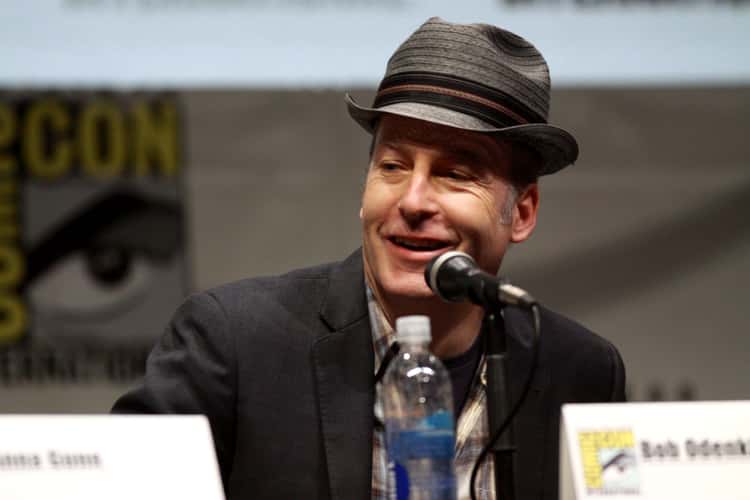
These days, Bob Odenkirk is perhaps most well known for playing Saul Goodman on the hit series Breaking Bad and its spinoff, Better Call Saul, but he actually began his career at Saturday Night Live, where he was a writer from 1987 to 1991.
Prior to being hired at SNL, Odenkirk studied with improv legend Del Close in Chicago and attended “The Players Workshop of the Second City.” It was there that he met SNL writer Robert Smigel, which led to a writing job on the hit sketch series.
2. Odenkirk Returned To Chicago’s Second City Theater In 1990 When Chris Farley And Tim Meadows Were Performing There
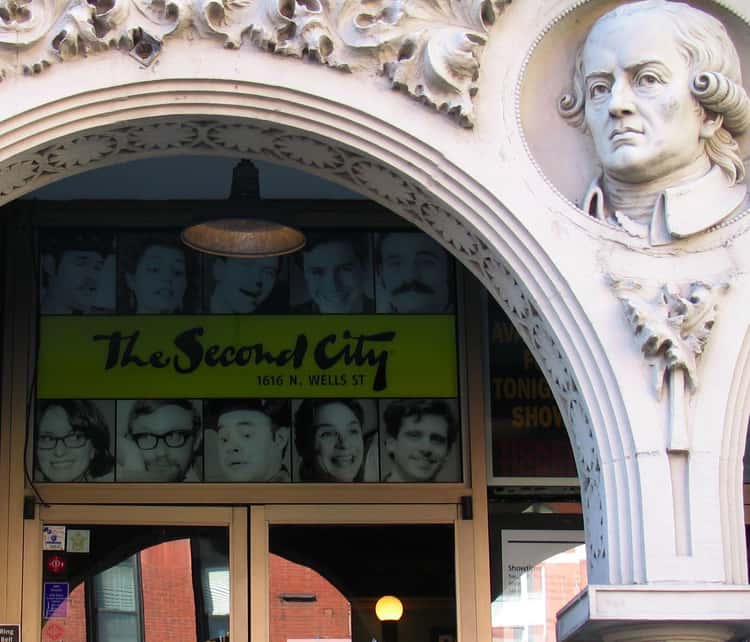
While SNL was on summer hiatus in 1990, Odenkirk returned to Chicago to write and perform in the Second City Mainstage show called Flag Smoking Permitted in Lobby Only or Censorama. At the time, future SNL cast members Chris Farley and Tim Meadows were Second City performers.
It was during this time that Odenkirk first crafted the Matt Foley character, specifically for his pal Chris. Foley was written as a trainwreck of a man who works as a motivational speaker to scare teenagers into turning their lives around.
3. Odenkirk Took A ‘Go-To Voice’ Farley Had Been Doing For A Football Coach And Built A Character Around It
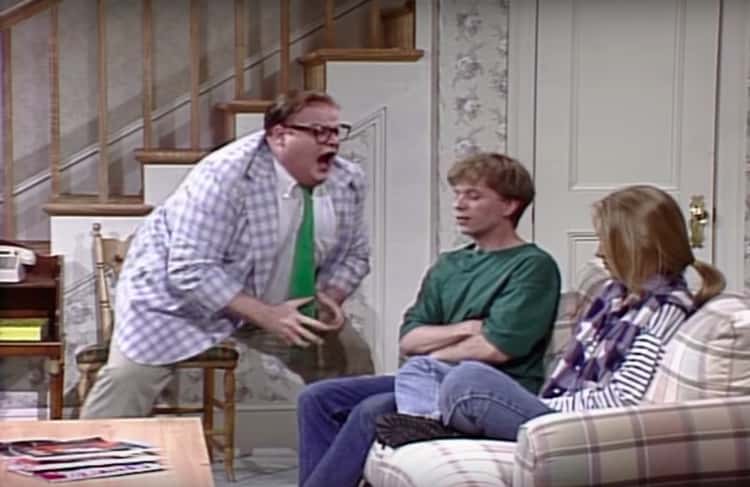
Odenkirk revealed on The View that he had heard Farley do the Foley voice in a different Second City sketch, then went home and wrote Foley alone in his apartment. Even though Farley didn’t write the sketch, he did come up with many of the elements that made the character so memorable.
“He had done a voice like that in an improv sketch, he was like a coach… and it was just a go-to voice for him,” Odenkirk said. “And I went and wrote this thing about a guy living in his van down by the river and he just [slayed] it every night. It was an amazing thing to see.”
4. ‘Matt Foley’ Was The Name Of A Pastor Who Was Farley’s Real-Life Friend And Classmate At Marquette
The Foley character was named after one of Farley’s rugby teammates at Marquette University. Farley would name characters after friends he spotted in the audience, but this one happened to stick.
The real-life Foley went on to become a Catholic priest in the suburbs of Chicago and would preside over Farley’s funeral in 1997. “Most of us, we’re much more complex than people portray us to be,” Father Foley says in the 2015 documentary I Am Chris Farley. “There’s the public persona and then there’s the person you know as a family member and a friend. Chris was that character people think he was, but he was not that character all the time. He also had a reflective side, a spiritual side, and a very caring side.”
Farley called Foley hours before the sketch first aired in May 1993 to give him a heads-up. “Matt Foley is going to be on tonight,” Farley said. “You’ve got to watch it.”
5. There’s Early Footage Of Farley Performing The Nearly Fully-Formed Character At Second City With Odenkirk
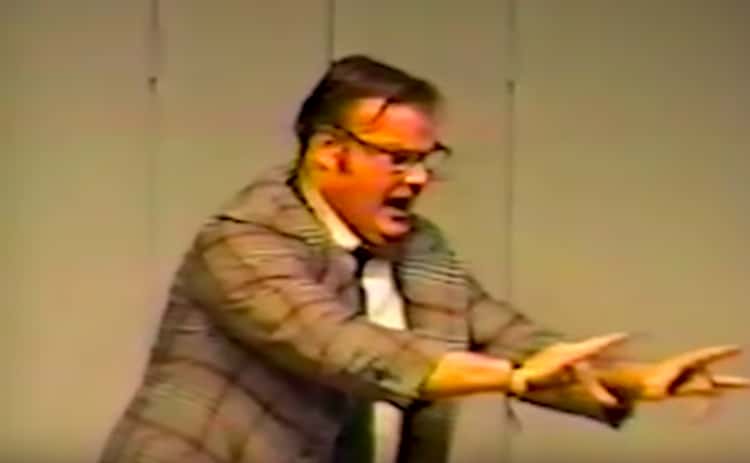
The 2015 documentary I Am Chris Farley includes footage of Farley performing the Foley character at Second City. The clip shows that even in those days Farley already had all of the character’s elements figured out – including his signature move of crouching down and hoisting up his pants with alternating hands.
In the footage, he appears onstage at Second City in the plaid jacket, glasses, and tie, with clear command over the character. Odenkirk called those shows with Farley “the best things” he’d ever done in show business.
6. The Character Was First Introduced To A National Audience In 1993, Three Years After Farley Joined ‘SNL’
When Foley finally debuted on SNL in 1993, Odenkirk had already left the show, so writer Smigel helped adapt the character for television. In the 2008 book The Chris Farley Show, which contains an oral history compiled by Tanner Colby and Farley’s brother Tom, Smigel says that he added the ending where Farley trips and falls down onto the coffee table, completely crushing it into small pieces. Farley performed the stunt with complete commitment, earning thunderous laughter from the audience.
The moment would help Farley ultimately earn his title as “the greatest physical comedian of his generation.” But Smigel says he now regrets adding the fall to the sketch, even though it got huge laughs.
“It worked really well, but it inaugurated this trend of Chris being really clumsy and falling down a lot,” Smigel said. “That sort of broad clumsiness was actually the opposite of what Chris’s talents as a physical comedian were.”
7. Everyone Onstage, Including David Spade, Julia Sweeney, And Host Christina Applegate, Transparently Cracked Up Throughout The Entire First Performance
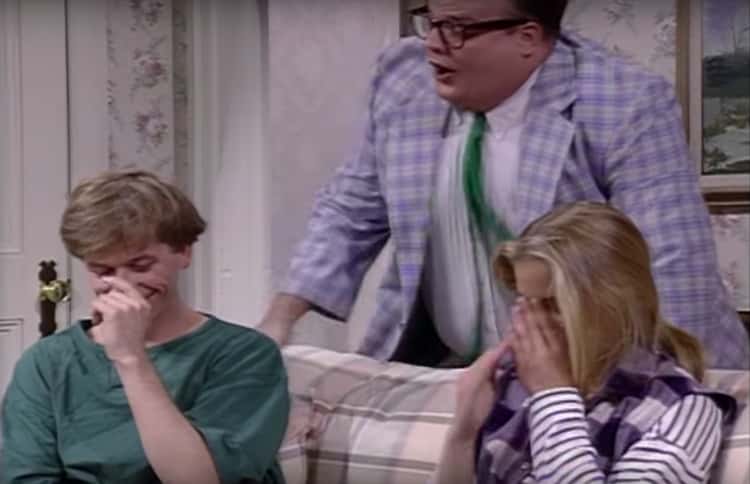
From the moment Farley began to address them, the cast could barely hold back their laughter on camera. David Spade and Christina Applegate tried unsuccessfully to hide their smiles behind their hair and hands.
In The Chris Farley Show, Spade reveals that Farley held back certain aspects of the performance until they were on live air. “In rehearsal, he’d done the thing with his glasses… But he’d never done the twisting his belt and hitching up the pants thing,” Spade said. “He saved that for the live performance, and so none of us had ever seen it. He knew that would break me.”
8. Foley Went On To Make Several Special Appearances Outside Of ‘SNL’
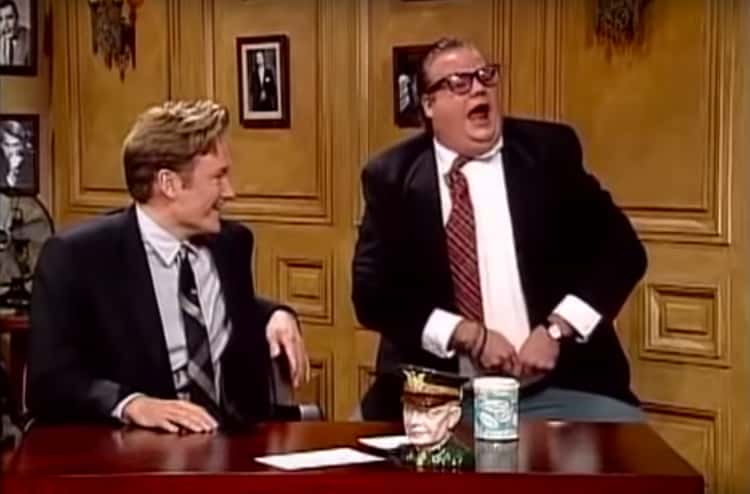
In January 1994, Farley played Foley in a special performance at the Rose Bowl where he gave his signature motivational talk to the Wisconsin Badgers football team. Farley grew up in Madison, WI, and had his service there after his passing.
Later that month, Farley appeared as Foley on Late Night with Conan O’Brien, which was in its first season. The show was still finding its way at the time and facing criticism over O’Brien’s lack of experience and the impossibly high expectations of replacing David Letterman. Lorne Michaels, the creator of SNL and the producer of Late Night, arranged for one of his most popular characters to appear on O’Brien’s show to give it a well-publicized boost.
Prior to his passing, Farley was reportedly in talks to make a movie version of Foley that would co-star Spade.
9. According To Odenkirk, The Key To The Character Is That He Feels Like A Real Person
Over the years at SNL, writers and cast members have often used catchphrases as a way to make sketches popular and memorable. The strategy can certainly be effective, but it can also be seen as a transparent attempt to get a laugh – and take the audience right out of the sketch. While Foley is known for his “van down by the river” line, Odenkirk argues that it’s a different kind of catchphrase.
Odenkirk told the Chicago Reader:
That character is telling a story with that catchphrase. It paints a picture; the phrase has a lot more meaning to it than just a catchphrase that stands alone. That sketch contains a very strong idea: that this guy uses his own tragic career path as fodder for his motivational speaker bit. But there is a lot more to it when Chris did it, and he made that character whole. It’s not a gimmick. You felt like there was a real person in that character.
10. The ‘Matt Foley’ Sketch Formula Changed After Odenkirk Left ‘SNL’
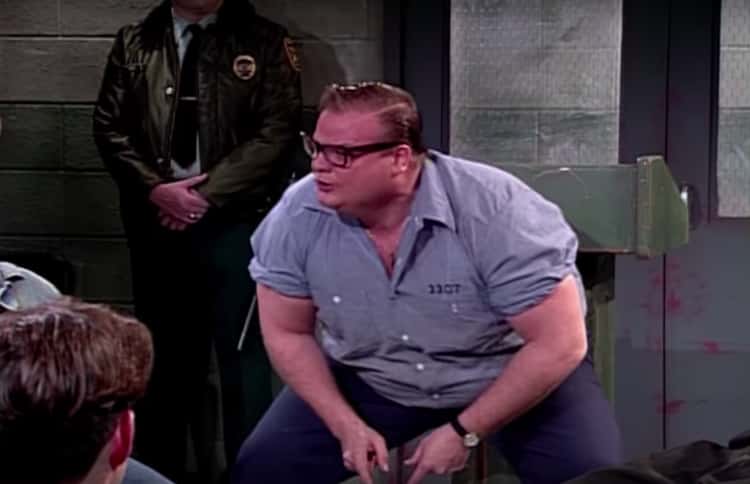
Odenkirk left SNL in 1991, but Farley stayed until 1995 and played Foley in eight different sketches over the course of his run. As a result, Foley would appear without creator Odenkirk’s involvement, and the structure of these sketches began to change.
“I told Chris and the writers, ‘Look. Whatever you do, the one thing to remember is: Don’t start from the ending. Start from the beginning, so that you have somewhere to go,’” Odenkirk recalled. “Almost every time Chris did that sketch after I left SNL, he started by breaking the table.”
11. In 2014, ‘Rolling Stone’ Named ‘Matt Foley, Motivational Speaker’ The Greatest Sketch In ‘SNL’ History
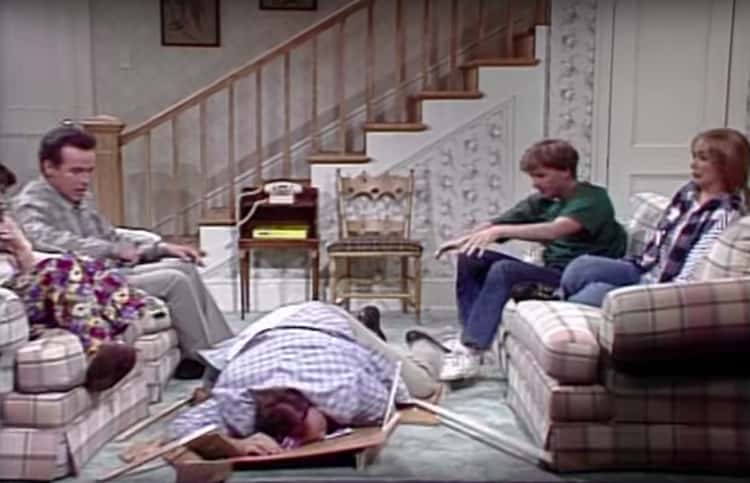
“Matt Foley, Motivational Speaker” earned the prestigious title of “Greatest Sketch in SNL History” when Rolling Stone published its list of the “50 Greatest Saturday Night Live Sketches of All Time.”
According to the list, “Foley was the single best use of the manic energy stored inside SNL‘s greatest physical comedian since John Belushi; a bundle of twitches, tics, throat-busting yells, and extreme pratfalls that made Chevy Chase look like Baryshnikov.”
12. In 2015, Melissa McCarthy Reprised The Character For The ‘SNL’ 40th Anniversary Special
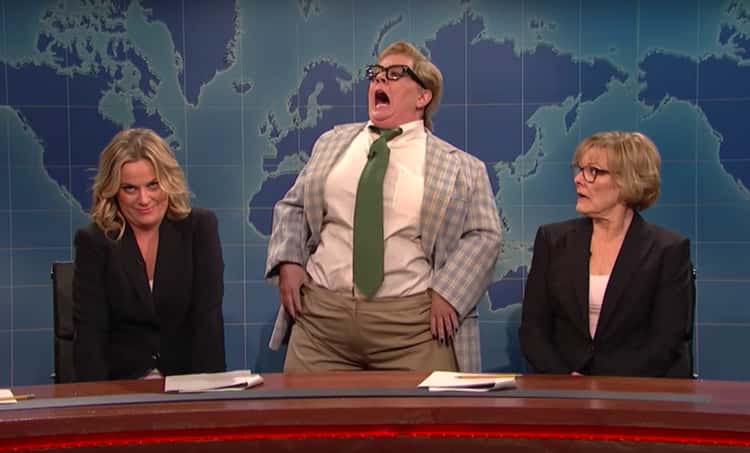
For Saturday Night Live’s big 40th anniversary special in 2015, Melissa McCarthy appeared on Weekend Update as Foley. It was a bold risk to take on such a beloved character, but it was part of a larger tribute to honor the cast members who have passed. Jimmy Fallon and Justin Timberlake played the Blues Brothers while Emma Stone portrayed Roseanne Roseannadanna.
McCarthy effectively paid homage to Farley’s performance with an impressive and flattering amount of attention to detail. According to Vanity Fair, “McCarthy did Farley’s physical comedy legacy proud.”
